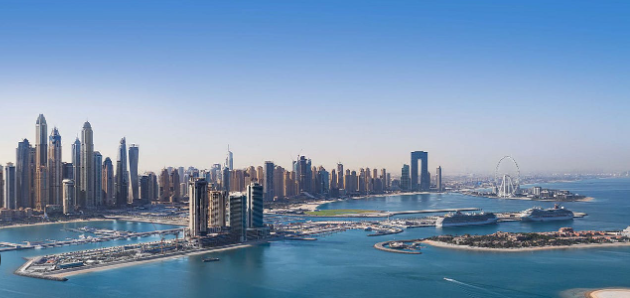Unveiling the Secrets of the Inca Empire: Majestic Machu Picchu
Majestic Machu Picchu: Exploring the Mysteries of the Inca Empire is a captivating journey into the heart of one of the world’s most enigmatic ancient civilizations. Nestled high in the Andes Mountains of Peru, Machu Picchu is a UNESCO World Heritage site and a testament to the architectural brilliance and cultural significance of the Inca Empire. This archaeological wonder continues to intrigue and inspire visitors with its breathtaking landscapes, intricate stone structures, and the mysteries that surround its purpose and ultimate demise. Join us as we delve into the history, significance, and ongoing exploration of this remarkable site, uncovering the secrets of the Inca Empire along the way.
Unveiling the Ancient Secrets of Machu Picchu: A Journey into Inca Civilization
Machu Picchu, the ancient Inca city nestled high in the Andes Mountains of Peru, continues to captivate the imagination of travelers from around the world. This majestic site, shrouded in mystery and surrounded by breathtaking natural beauty, offers a glimpse into the fascinating civilization of the Incas. As we embark on a journey to unveil the ancient secrets of Machu Picchu, we are transported back in time to a world where the Inca Empire reigned supreme.
The Inca civilization, which flourished from the 13th to the 16th century, was a remarkable feat of engineering and organization. Machu Picchu, believed to have been built as a royal estate for the Inca emperor Pachacuti, showcases the ingenuity and architectural prowess of the Incas. The city was constructed with precision, utilizing massive stone blocks that fit together seamlessly without the use of mortar. The intricate terraces, temples, and residential areas are a testament to the advanced knowledge and skills of the Inca people.
One of the enduring mysteries of Machu Picchu is its purpose. While it is widely accepted that it served as a royal retreat, some theories suggest that it may have also been a religious or ceremonial site. The presence of sacred temples and astronomical alignments adds to the intrigue surrounding this ancient city. As we explore the ruins, we can’t help but wonder about the rituals and beliefs that were practiced here, and the significance of the celestial alignments in the Inca worldview.
The layout of Machu Picchu is also a source of fascination. Divided into distinct sectors, each with its own purpose, the city was designed to accommodate various functions of the Inca society. The agricultural terraces, for example, provided sustenance for the inhabitants, while the residential areas housed the elite and their servants. The presence of a sophisticated water management system further highlights the advanced planning and engineering skills of the Incas.
As we delve deeper into the mysteries of Machu Picchu, we encounter the enigmatic Intihuatana stone. This sacred stone, believed to have served as a solar clock or calendar, was used by the Incas to mark the changing seasons and align their agricultural activities with the celestial cycles. The precise positioning of the stone and its connection to the surrounding landscape suggest a deep reverence for nature and a profound understanding of the cosmos.
The discovery of Machu Picchu in 1911 by Hiram Bingham, an American explorer, brought this ancient city to the attention of the world. Since then, countless visitors have made the pilgrimage to this UNESCO World Heritage site, eager to experience the awe-inspiring beauty and unravel the secrets of the Inca Empire. Today, Machu Picchu remains a symbol of the ingenuity and resilience of the Inca civilization, a testament to their ability to create a harmonious relationship between man and nature.
In conclusion, Machu Picchu offers a window into the fascinating world of the Inca Empire. As we explore the ruins and uncover its ancient secrets, we are transported back in time to a civilization that thrived in harmony with its surroundings. The precision and ingenuity of the Inca architecture, the enigmatic rituals and beliefs, and the profound connection to nature all contribute to the allure of this majestic site. Machu Picchu continues to captivate and inspire, inviting us to unravel the mysteries of the Inca Empire and appreciate the rich cultural heritage of Peru.
The Enigmatic Architecture of Machu Picchu: Unraveling the Inca’s Engineering Marvels
Machu Picchu, the ancient Inca city nestled high in the Andes Mountains of Peru, continues to captivate and mystify visitors from around the world. This UNESCO World Heritage site, often referred to as the “Lost City of the Incas,” is renowned for its enigmatic architecture and engineering marvels. As we explore the secrets of Machu Picchu’s construction, we gain a deeper understanding of the ingenuity and skill of the Inca Empire.
One of the most remarkable aspects of Machu Picchu’s architecture is its seamless integration with the natural landscape. The city is strategically located on a ridge between two mountains, with steep cliffs on three sides. The Inca engineers took full advantage of the natural topography, incorporating the existing rock formations into their construction. The result is a harmonious blend of man-made structures and the surrounding environment.
The precision and craftsmanship of the Inca stonework at Machu Picchu are truly awe-inspiring. The stones used in the construction are cut with such precision that they fit together without the need for mortar. This technique, known as “ashlar masonry,” is a testament to the Inca’s advanced understanding of engineering and architecture. The stones are so precisely cut that not even a blade of grass can fit between them, a remarkable feat considering the size and weight of some of the stones.
The Inca’s mastery of stone carving is evident in the intricate designs and shapes found throughout Machu Picchu. The most famous example is the Intihuatana Stone, a ritual stone that served as a solar clock. This stone is carved with such precision that it casts no shadow during the equinoxes, indicating the exact moment when the sun is directly above the stone. The Intihuatana Stone is just one example of the Inca’s ability to blend art and science in their architectural creations.
Another fascinating aspect of Machu Picchu’s architecture is its sophisticated water management system. Despite being located in a region with heavy rainfall, the city has a complex network of canals, fountains, and terraces that efficiently collect and distribute water throughout the site. The Inca engineers designed the terraces to prevent erosion and maximize water retention, ensuring a sustainable water supply for the city’s inhabitants. This level of foresight and planning is a testament to the Inca’s deep understanding of their environment and their ability to adapt to it.
The purpose of Machu Picchu remains a subject of debate among archaeologists and historians. Some believe it was a royal retreat, while others argue that it served as a religious or ceremonial center. Regardless of its original function, there is no denying the architectural brilliance of Machu Picchu. The city’s layout, with its carefully planned plazas, temples, and residential areas, reflects the Inca’s meticulous attention to detail and their desire to create a harmonious and functional living space.
In conclusion, the enigmatic architecture of Machu Picchu is a testament to the Inca’s engineering marvels. The seamless integration with the natural landscape, the precision of the stonework, the intricate carvings, and the sophisticated water management system all showcase the Inca’s advanced understanding of architecture and engineering. As we explore the mysteries of Machu Picchu, we gain a deeper appreciation for the ingenuity and skill of the Inca Empire. This ancient city continues to inspire and awe visitors, reminding us of the enduring legacy of the Inca civilization.
Sacred Rituals and Spiritual Significance: Unearthing the Mystical Traditions of Machu Picchu
Machu Picchu, the ancient Inca citadel nestled high in the Andes Mountains of Peru, continues to captivate the imagination of travelers from around the world. Beyond its breathtaking beauty and architectural marvels, Machu Picchu holds a deep spiritual significance for the Inca people. Unearthing the mystical traditions and sacred rituals of this enigmatic site reveals a profound connection between the Inca Empire and the spiritual realm.
The Inca Empire, known for its advanced engineering and agricultural practices, was also deeply rooted in spiritual beliefs. Machu Picchu, as the spiritual center of the empire, played a crucial role in the Inca’s religious practices. The site’s strategic location, surrounded by towering mountains and lush valleys, was believed to be a gateway to the heavens. The Incas believed that the gods resided in the mountains, and Machu Picchu served as a sacred meeting place between the earthly and divine realms.
One of the most intriguing aspects of Machu Picchu’s spiritual significance is its alignment with celestial events. The Incas were skilled astronomers and built their structures in harmony with the movements of the sun, moon, and stars. The Intihuatana stone, a carved rock pillar at the site, served as a solar clock, marking the solstices and equinoxes. During these celestial events, the Incas would perform elaborate rituals to honor the sun god, Inti, and ensure the fertility of their crops.
Another important aspect of Machu Picchu’s spiritual significance lies in its sacred rituals. The Incas believed in the power of offerings and sacrifices to appease the gods and maintain harmony in the world. At Machu Picchu, priests would conduct ceremonies involving the sacrifice of animals, such as llamas, as well as offerings of food, textiles, and precious metals. These rituals were believed to ensure the prosperity and protection of the Inca Empire.
The Temple of the Sun, a prominent structure at Machu Picchu, held particular importance in the Inca’s spiritual practices. This temple was dedicated to Inti, the sun god, and was believed to be a place of divine communication. The Incas would perform rituals and ceremonies within the temple, seeking guidance and blessings from the gods. The temple’s intricate stonework and celestial alignments further emphasize its spiritual significance.
The spiritual traditions of Machu Picchu extended beyond religious rituals. The site also served as a place of pilgrimage and spiritual retreat for the Inca elite. The Incas believed that by connecting with the sacred energies of the site, they could gain wisdom and insight. The natural beauty and serene atmosphere of Machu Picchu provided the perfect setting for meditation and introspection.
Today, visitors to Machu Picchu can still experience the spiritual significance of this ancient site. The awe-inspiring landscapes, ancient ruins, and mystical atmosphere create a profound sense of connection with the past. Many travelers choose to participate in spiritual ceremonies led by local shamans, who continue to honor the traditions of the Inca people. These ceremonies often involve offerings, prayers, and rituals aimed at seeking blessings and spiritual guidance.
In conclusion, Machu Picchu’s spiritual significance is a testament to the deep-rooted beliefs and mystical traditions of the Inca Empire. The site’s alignment with celestial events, sacred rituals, and its role as a place of pilgrimage all contribute to its enigmatic allure. Exploring the mysteries of Machu Picchu allows us to delve into the spiritual world of the Inca people and gain a deeper understanding of their profound connection with the divine.In conclusion, Majestic Machu Picchu offers a captivating exploration into the mysteries of the Inca Empire. This ancient archaeological site showcases the remarkable engineering and architectural skills of the Incas, leaving visitors in awe of their achievements. The enigmatic ruins, breathtaking landscapes, and rich cultural heritage make Machu Picchu a must-visit destination for history enthusiasts and adventure seekers alike. Exploring this UNESCO World Heritage Site provides a unique opportunity to delve into the secrets of the Inca civilization and appreciate the beauty and significance of this remarkable wonder of the world.




